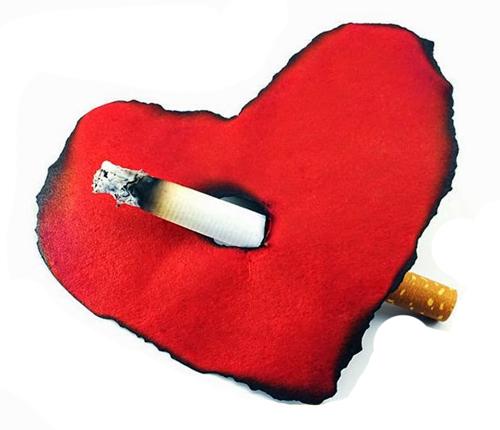You are here
Second-hand smoke linked to higher risk of stroke
By Reuters - Oct 22,2016 - Last updated at Oct 22,2016

Photo courtesy of wellnesslabinfo
The increased risk of stroke that comes with smoking may extend to non-smokers who live in the same household and breathe in second-hand smoke, a US study suggests.
Researchers found that never-smokers who had a stroke were nearly 50 per cent more likely to be exposed to second-hand smoke at home than people who had never had a stroke.
During the study, stroke survivors exposed to second-hand smoke were also more likely to die from any cause compared to those without second-hand smoke exposure.
“Second-hand smoke is a risk to all people, but those with a history of stroke should take extra care to avoid it,” said lead author Dr Michelle Lin of the Johns Hopkins School of Medicine in Baltimore.
One in four non-smokers (58 million people) in the US are still exposed to second-hand smoke, according to the Centres for Disease Control and Prevention.
“While cigarette smoking has long been known to increase the risk of stroke, less is known about the relationship between second-hand smoke and stroke,” Lin said by e-mail.
To explore the question, the study team analysed data on nearly 28,000 never-smokers over age 18 who participated in annual National Health and Nutrition Examination Surveys.
Participants were recruited between 1988 and 1994 and again between 1999 and 2012. They were asked, “Does anyone who lives here smoke cigarettes, cigars, or pipes anywhere inside this home?”
To gauge the amount of smoke people were exposed to, blood tests for cotinine, a breakdown product of nicotine, were performed on each participant.
The researchers also looked at other factors that might influence stroke risk or likelihood of second-hand smoke exposure like race, sex, education and income level.
The people most likely to be exposed to second-hand smoke at home were black men with high alcohol intake and a history of heart attack who were living in poverty.
Among survey participants between 1999 and 2012, people exposed to high amounts of second-hand smoke, as measured by blood cotinine, were 46 per cent more likely than those exposed to little or no smoke to have a history of past stroke.
In the 1988-1994 group, the results were different, and second-hand smoke exposure was not linked to increased stroke risk. The study team writes in the journal Stroke that this difference requires further investigation.
Among all participants, however, stroke survivors who reported second-hand smoke exposure were about twice as likely to die of any cause, compared with stroke survivors not exposed to smoke.
This added risk of death among people with prior stroke increased along with the amount of smoke exposure.
The same pattern was not seen among people without prior stroke, and the study team speculates that the reason might be second-hand smoke most affects people who already have vascular disease, such as those with a history of prior stroke or heart attack.
“No level of exposure to second-hand smoke is safe,” said Angela Malek, a researcher at the Medical University of South Carolina who studies second-hand smoke risk.
Malek noted that in addition to stroke, adults exposed to second-hand smoke are also at risk for heart disease and lung cancer, while children may experience asthma and infections.
“Limiting or avoiding areas in which smoking is taking place is recommended for both children and adults,” Malek said by e-mail. “It is never too late to start avoiding environmental smoke exposure!”
“Move away from smokers to minimise your exposure to second-hand smoke,” Lin advised. “Tell smokers that they put everyone else around them at risk for stroke.”
Related Articles
Pregnant women who have been exposed to high levels of second-hand smoke have a higher rate of miscarriages, stillbirths and foetal deaths, a new study suggests.
People with asthma may face increased risk from second-hand smoke exposure while riding in the close quarters of a vehicle, according to US researchers.
PARIS — Air pollution was fingered for the first time as a major contributor to death and disability caused by stroke, especially in develop











